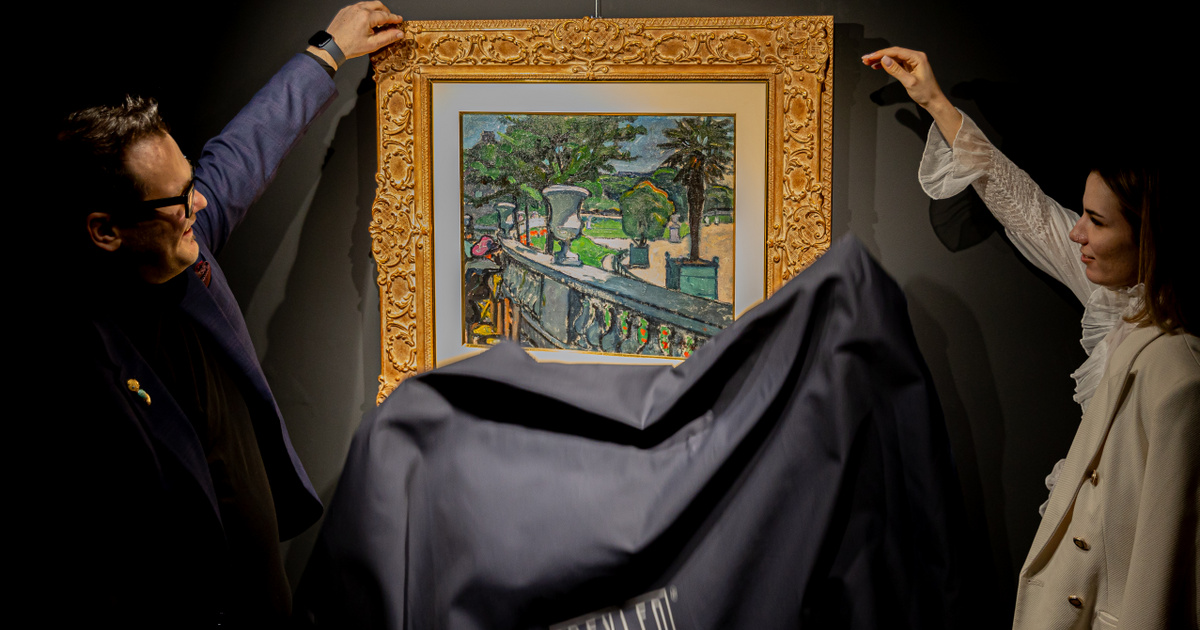Ziffer's ill-fated portrait, hidden for one hundred and ten years, has been revealed and has now found a worthy home in the FreylerArt gallery in Pest. Until now, art connoisseurs could only admire it in catalogues, not in person. Luxembourg in Paris In the post titled.
Gallery owner Zoltan F. Toth removed the gray veil from a portrait of a prominent figure in the Nagybanja painting movement on April 4, 2024, as part of a public press event. Sandor Szeffer's work is mainly associated with Transylvania, but he also created in the French capital: the picture was also born there, in a central park in Paris, in Luxembourg.
Most of Szefer's works are in Transylvania and Hungary, and many of his photographs are also found in Berlin, Hamburg, and Munich, where he studied and worked in these cities. However, a piece of zephyr occasionally appears in Paris and other parts of France.
They thought it was Rebel Runai
The painting found last year had been owned by a well-known country doctor and his family since around the 1950s. The picture was purchased because of the Doctor's mother's love of art, but was recommended by a picture dealer as a painting by Rebel Ronay. The painting then remained with the family, who, although not knowing its value, thought it was an expensive painting, being a Rebel Ronay…
We saw in the photos sent that it was the work of a very skilled painter, we also photographed the period around 1910, and we also knew by looking at the photo that it was not a Rebel Ronai. After the kind invitation, we saw the picture on the living room table and started examining it. After asking its owners for permission to take it out of the frame and view it without glass, we took the painting out to the sunny balcony. They did not dare touch the protective glass on the side of the picture, as over the decades it had become smudged here and there, and neither colors nor details were quite visible
– said F. Toth in the study prepared for the picture.
Beneath the burgundy Ronay mark, which was later pasted over, between the elements of the balustrade appeared Sandor Szefer's famous signature written in black, slightly italicized and weak, and the fate of the picture was sealed: it ended up in Budapest.
French poet
The story of the painting begins during Zephyr's second trip to France, in the fall of 1910, which was also his last trip to Paris. On the other side of the Luxembourg Gardens, the young artist lived in the house at 30 rue Vaugirard.
The picture's journey from Paris initially led to an exhibition in Budapest. Sandor Zephyr Luxembourg in Paris He brought his painting from the French capital to his homeland and then displayed it in the sixth exhibition. In his group exhibition: His catalog number was 80.
The painting perfectly reproduces the atmosphere of the 90s.
On the left side, you can see a lady wearing a black coat, a gray cloak, and a dark blue flower on her purple hat. He sits on one of the yellow chairs on the balcony, raising his hands to his head, enjoying the closeness to nature in the heart of the French capital. Behind him is the silhouette of a gentleman in a hat, depicted by the artist in a pistachio green coat.
Anyone can view the picture with an adventure story on the first floor of the FreylerArt gallery for four weeks from now.

Scandal album – 150 paintings with educational and funny lessons













































